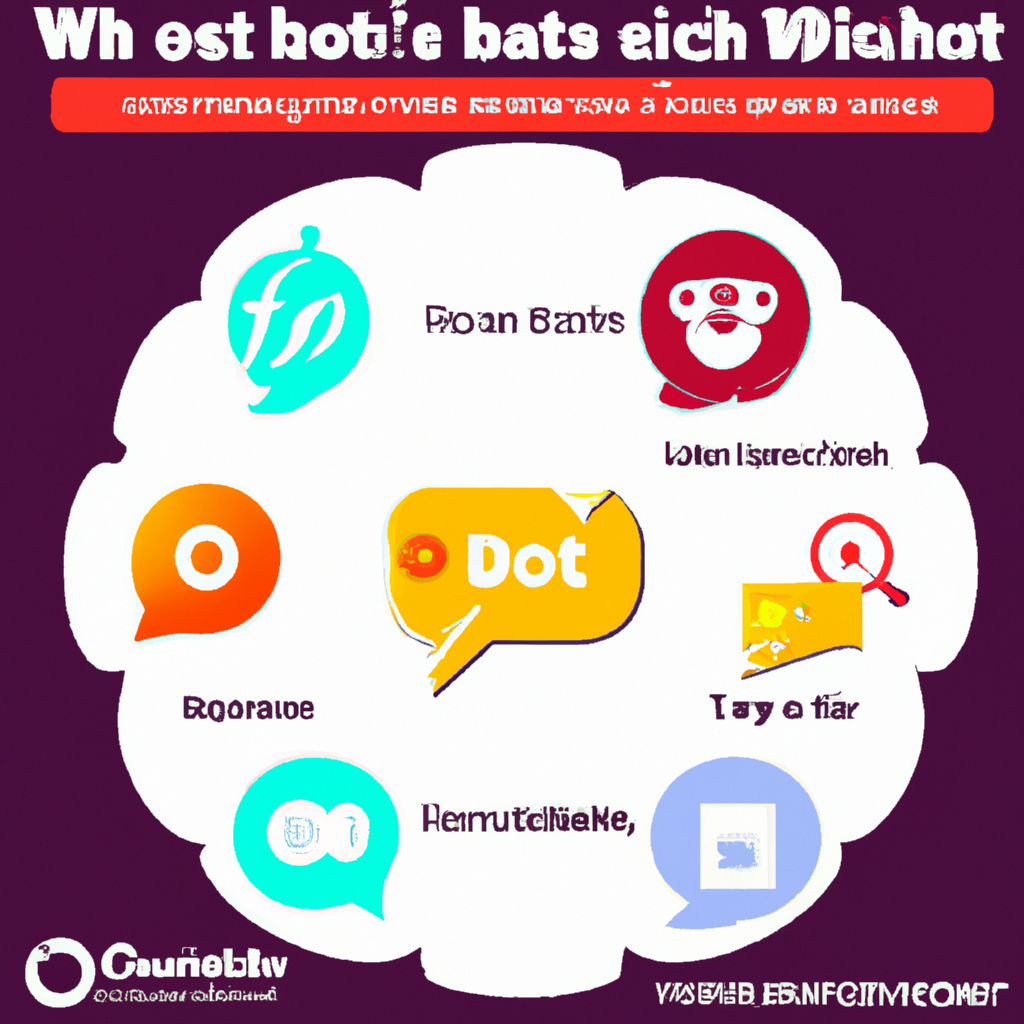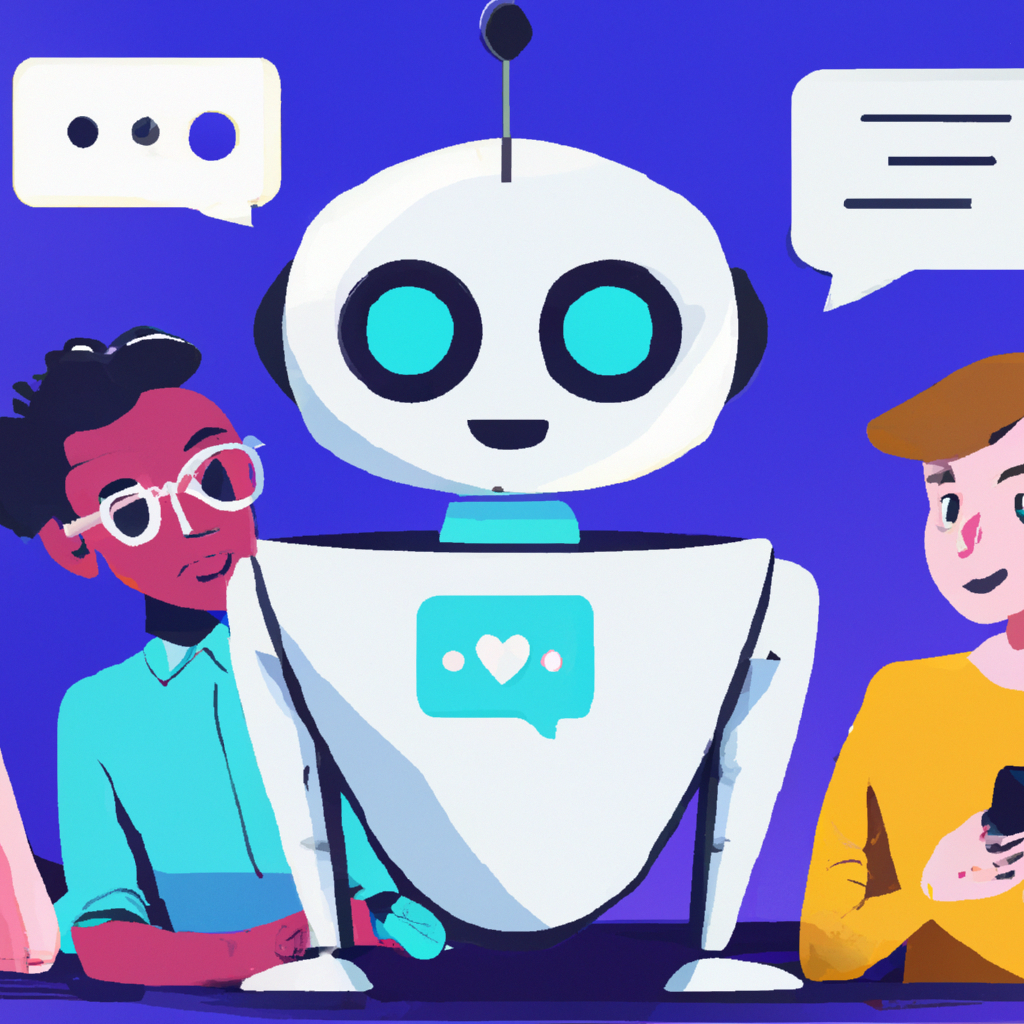If you’ve ever wondered about the various types of chatbots and how they distinguish themselves, you’ve come to the right place. In this article, we’ll explore the fascinating world of chatbots and uncover the differences between them. Whether you’re an expert or just starting to dip your toes into the chatbot realm, this content will provide valuable insights and a comprehensive understanding of these innovative communication tools. So sit back, relax, and let’s embark on a journey to unravel the mysteries of chatbots together!
Types of chatbots
Chatbots have become increasingly popular in recent years, revolutionizing the way businesses interact with customers. From providing customer support to automating certain tasks, chatbots have proven to be a valuable tool for companies across various industries. However, not all chatbots are the same. There are different types of chatbots, each with its own unique features and capabilities. In this article, we will explore the various types of chatbots and delve into the definition, functionality, advantages, and limitations of each.
1. Rule-based chatbots
Definition and functionality
Rule-based chatbots, also known as decision tree chatbots, are the simplest form of chatbots. They follow a set of predetermined rules and predefined responses. These chatbots are programmed to understand specific keywords or phrases and provide predefined answers based on those keywords. Rule-based chatbots typically use if-else statements to identify and respond to user queries.
Advantages
One of the key advantages of rule-based chatbots is their simplicity. Since they operate on a predefined set of rules, they are relatively easy to develop and implement. Additionally, rule-based chatbots can provide quick and accurate responses, as they rely on well-defined parameters. They can handle simple customer queries efficiently, such as providing basic information or guiding users through a specific process.
Limitations
While rule-based chatbots can handle simple queries effectively, they have limitations when it comes to handling complex and nuanced conversations. These chatbots are unable to understand the context of a conversation or provide personalized responses. They lack the ability to learn and improve over time, which means they cannot adapt to changing user needs.

2. AI chatbots
Definition and functionality
AI chatbots, also known as machine learning chatbots, are designed to simulate human-like conversations. These chatbots leverage artificial intelligence (AI) and natural language processing (NLP) to understand and respond to user queries. AI chatbots use algorithms and machine learning models to learn from vast amounts of data, enabling them to understand context, sentiment, and intent.
Advantages
AI chatbots offer a more interactive and personalized user experience compared to rule-based chatbots. They can understand natural language, detect sentiment, and provide relevant responses accordingly. These chatbots continually learn and improve over time, allowing them to handle complex queries and adapt to changing user needs. AI chatbots also have the ability to integrate with other systems and databases, enabling them to provide more comprehensive and accurate information.
Limitations
One of the main challenges with AI chatbots is the initial training phase. These chatbots require substantial amounts of data and training to achieve optimal performance. They also need ongoing monitoring and maintenance to ensure accurate responses. Furthermore, AI chatbots may face difficulties in understanding ambiguous or colloquial language, leading to potential misinterpretation of user queries.
3. Scripted chatbots
Definition and functionality
Scripted chatbots, as the name suggests, follow a predefined script or conversation flow. These chatbots are programmed with specific dialogues and responses based on anticipated user queries. Scripted chatbots are commonly used for specific purposes, such as lead generation or FAQs, where the conversation can be anticipated.
Advantages
Scripted chatbots offer consistency and control over the conversation. Since the script is predetermined, these chatbots can deliver a predefined set of responses, ensuring a standardized user experience. Scripted chatbots are ideal for scenarios where the conversation flow needs to be tightly controlled, such as collecting specific user information or providing step-by-step guidance.
Limitations
The main limitation of scripted chatbots is their inability to handle unexpected or out-of-scope queries. If a user asks a question outside the predefined script, scripted chatbots may struggle to provide a relevant response. These chatbots lack the ability to learn from new interactions and may result in frustrating user experiences if they cannot answer certain queries.

4. Menu-based chatbots
Definition and functionality
Menu-based chatbots, also known as decision tree chatbots, present users with a menu of options to choose from. Users select the relevant option based on their query, and the chatbot provides a response accordingly. These chatbots are designed for scenarios where the conversation flow can be categorized into specific topics or options.
Advantages
Menu-based chatbots offer a structured and user-friendly approach to conversations. By presenting users with a menu, these chatbots simplify the interaction process and ensure that users can easily navigate through different topics or options. Menu-based chatbots are particularly useful for scenarios where users may have specific questions or require quick access to specific information.
Limitations
The limitations of menu-based chatbots lie in their rigidity and lack of flexibility. These chatbots can only provide responses that align with the predefined menu options. If a user query falls outside the available options, the chatbot may struggle to provide a relevant response. Menu-based chatbots are not suitable for handling open-ended or complex inquiries.
5. Virtual assistants
Definition and functionality
Virtual assistants, also known as conversational agents, are advanced chatbots that aim to simulate human-like conversations. These chatbots utilize AI and NLP techniques to understand and respond to user queries in a conversational manner. Virtual assistants are designed to provide a more natural and interactive user experience, often incorporating voice recognition and synthesis technologies.
Advantages
Virtual assistants offer a high level of interactivity and personalization. They can understand natural language, detect intent, and provide contextual responses. Virtual assistants can handle complex queries, engage in multi-turn conversations, and adapt their responses based on user preferences. They can also integrate with various platforms and systems, providing seamless interactions across different channels.
Limitations
One of the limitations of virtual assistants is the potential for misunderstandings or misinterpretations due to the complexities of natural language processing. These chatbots may struggle with understanding context or handling ambiguous queries. Additionally, virtual assistants require substantial training and ongoing maintenance to ensure accurate responses and optimal performance.

6. Messaging chatbots
Definition and functionality
Messaging chatbots are designed to interact with users through messaging platforms or applications. These chatbots leverage the popularity of messaging apps to provide businesses with an additional communication channel. Messaging chatbots can perform a variety of tasks, such as answering FAQs, providing recommendations, and facilitating transactions.
Advantages
Messaging chatbots offer convenience and accessibility. Users can interact with these chatbots through familiar messaging platforms, eliminating the need for separate apps or interfaces. Messaging chatbots can provide quick and instant responses, enhancing customer satisfaction and reducing response times. Additionally, these chatbots can handle multiple conversations simultaneously, improving efficiency for businesses.
Limitations
The limitations of messaging chatbots lie in their reliance on text-based communication. These chatbots may struggle with complex queries that require visual or verbal interactions. They are also limited by the functionalities and features of the messaging platforms they are integrated with. Messaging chatbots may not be suitable for scenarios where visual content or real-time interactions are critical.
7. Social media chatbots
Definition and functionality
Social media chatbots are chatbots specifically designed to interact with users on social media platforms. These chatbots leverage the popularity of social media channels to engage with customers, handle inquiries, and provide support. Social media chatbots can be integrated into messaging platforms within social media apps or can be accessed through dedicated chat widgets on websites.
Advantages
Social media chatbots enable businesses to provide seamless customer support and engagement on popular social media platforms. These chatbots can handle inquiries in real-time, resolve simple issues, and provide relevant information regarding products or services. Social media chatbots also allow businesses to gather valuable data and insights about customer preferences and interactions.
Limitations
The limitations of social media chatbots revolve around the limitations of social media platforms themselves. These chatbots may need to comply with specific platform guidelines, which can limit their functionalities. Additionally, the user experience may vary across different social media platforms, depending on the availability and integration of chatbot features.

8. Voice-activated chatbots
Definition and functionality
Voice-activated chatbots, also known as voice assistants or voice bots, allow users to interact with a chatbot using voice commands and natural language. These chatbots utilize speech recognition technologies to understand and interpret user queries. Voice-activated chatbots can perform various tasks, such as answering questions, providing recommendations, and controlling smart devices.
Advantages
Voice-activated chatbots offer a hands-free and user-friendly interaction experience. Users can engage with these chatbots using voice commands, eliminating the need for typing or navigating through menus. Voice-activated chatbots can perform tasks quickly and efficiently, enabling users to access information or execute actions in a convenient manner. These chatbots are particularly useful in situations where manual operation is challenging or not feasible.
Limitations
The limitations of voice-activated chatbots include potential speech recognition errors and the need for clear and precise user commands. These chatbots may struggle to understand accents, dialects, or speech variations, leading to misunderstandings or incorrect responses. Additionally, voice-activated chatbots require robust speech recognition technologies and may face challenges in noisy environments or with users with speech impairments.
10. Multilingual chatbots
Definition and functionality
Multilingual chatbots are designed to interact with users in multiple languages. These chatbots can understand and respond to user queries in different languages, providing a seamless experience for users across various linguistic backgrounds. Multilingual chatbots leverage translation and natural language processing technologies to facilitate communication in different languages.
Advantages
Multilingual chatbots enable businesses to reach a global audience and provide support in multiple languages. These chatbots eliminate language barriers and ensure that users can interact in their preferred language. Multilingual chatbots can enhance customer satisfaction, improve engagement, and expand the reach of businesses beyond language limitations.
Limitations
The limitations of multilingual chatbots lie in the complexities of language variations and cultural nuances. These chatbots may struggle with understanding context or idiomatic expressions specific to different languages. The accuracy of translation and the ability to handle specific linguistic structures may vary across different languages. Multilingual chatbots require robust language models and ongoing maintenance to ensure accuracy and optimal performance.
In conclusion, chatbots come in various types, each with its own unique features, advantages, and limitations. Rule-based chatbots offer simplicity and quick responses but lack the ability to handle complex conversations. AI chatbots provide more interactive and personalized experiences but require substantial training and maintenance. Scripted chatbots offer consistency but struggle with unexpected queries. Menu-based chatbots provide structured interactions but lack flexibility. Virtual assistants simulate human-like conversations and offer a high level of interactivity. Messaging chatbots provide convenience through messaging platforms but may be limited in handling complex queries. Social media chatbots enable seamless customer support on social media platforms but are subject to platform limitations. Voice-activated chatbots offer hands-free interactions but may face challenges in speech recognition. Multilingual chatbots eliminate language barriers but require robust language models. Understanding the different types of chatbots can help businesses choose the most suitable option to enhance customer engagement and streamline operations.

